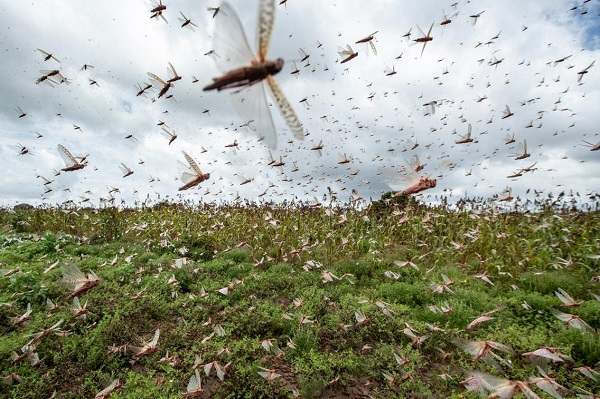
Environmental Fund helps fight locust outbreak in north-eastern regions

The widescale invasion of vast swarms of the migratory African Red Locust is a serious threat to the crops that are now being planted. These insects destroy large patches of seedlings, thus requiring a replant which is costly and which retards the growing season.
Helping to muster forces against the invasion, the Environmental Investment Fund of Namibia has donated N$2 million to the agriculture ministry to combat the invading armies of locusts.
The outbreak, which poses a food security threat, has since the second outbreak in early August, destroyed hundreds of hectares of pasture in Zambezi.
Speaking at the handover ceremony, Lot Ndamanomhata, the fund’s spokesperson said the fund is directly affected by the locust outbreak because of the Climate Resilient Agriculture project running in the Kavango East, Kavango West and Zambezi regions. Called the CRAVE Project, it helps reduce climate vulnerability and it increases the adaptive capacity and resilience of small-scale farming communities in the northern crop production areas.
“The fund is hopeful that this assistance will go a long way in enabling and assisting the various stakeholders involved in curbing the spread to do their work in an environmentally sound and sustainable way as what we do to combat this outbreak will also say a lot about our interventions,” Ndamanomhata said.
Percy Misika, Executive Director in the Ministry of Agriculture, Water, and Land Reform, said the donation will be used to secure biological pesticides, mist blowers, personal protective gear and chemical respirators, amongst others.
“The support of other government offices, ministries and agencies and development partners has been very helpful in combatting the outbreak. However considering the lightening speed at which the outbreak is spreading to other parts of the country, it is clear that more support is needed. As such, concerted efforts need to continue and should be intensified during the main crop growing period of November 2020 to March 2021,” Misika added.













































